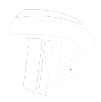Use of melamine tableware
Tableware is suitable for catering (fast food) chains, food squares, University (University) canteens, hotels, enterprise canteens, advertising gifts, etc. Because of the particularity of molecular structure of melamine plastics, melamine tableware is not suitable for use in microwave oven, and it will crack if used.Cleaning of tableware Melamine tableware can’t be washed with steel wire ball, which will wash off the glossiness of the tableware surface and leave many scratches, so it’s not recommended to wash with steel wire ball, [...]

